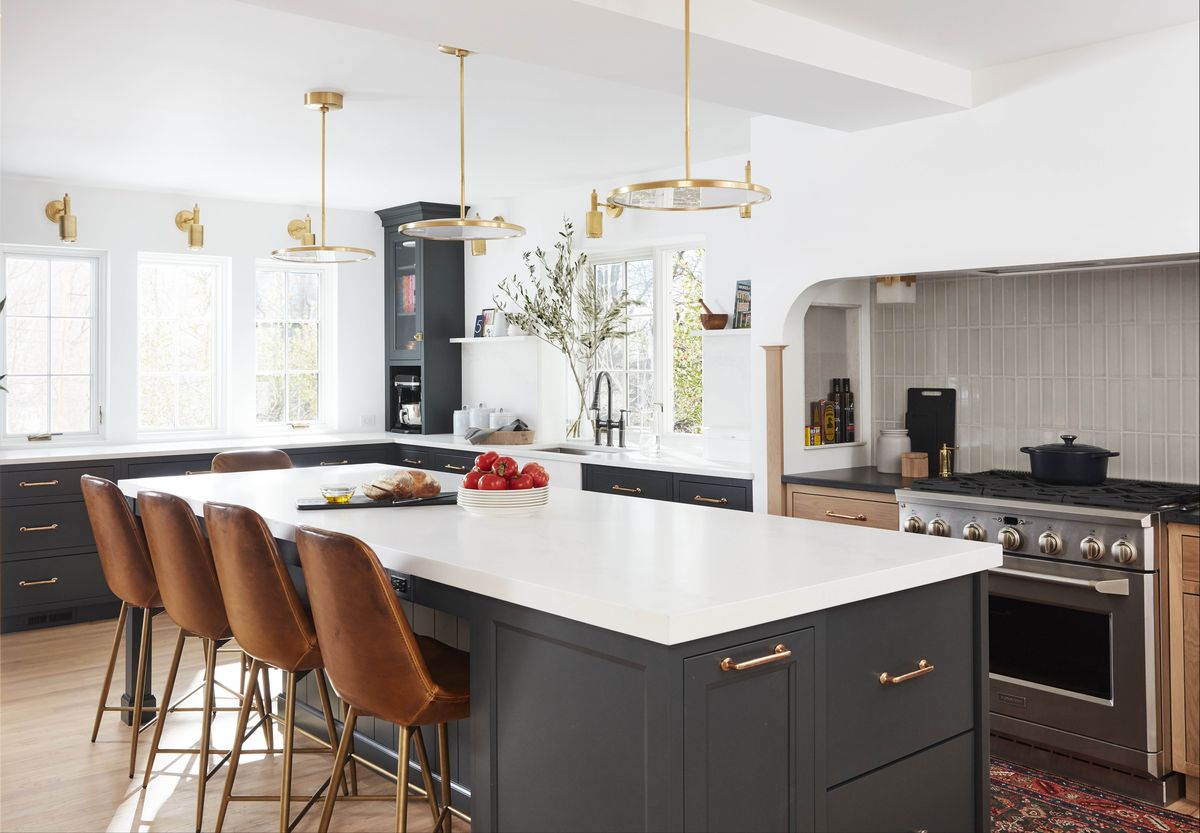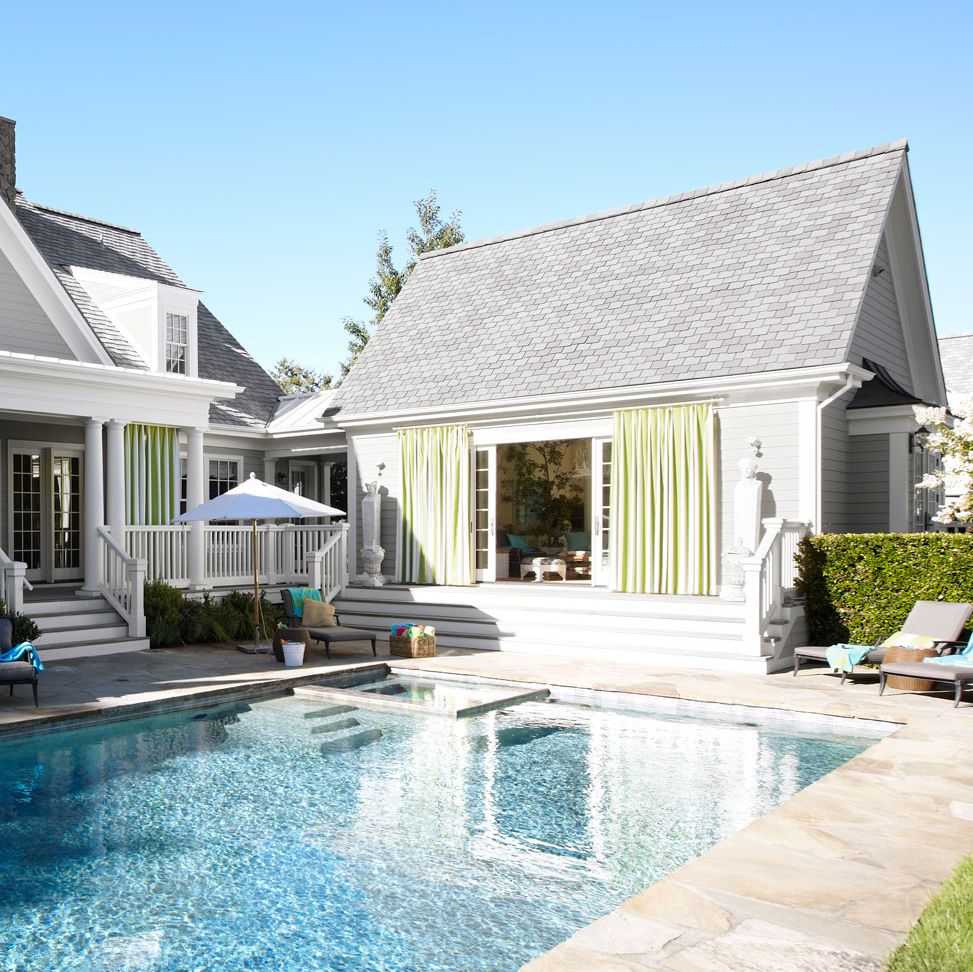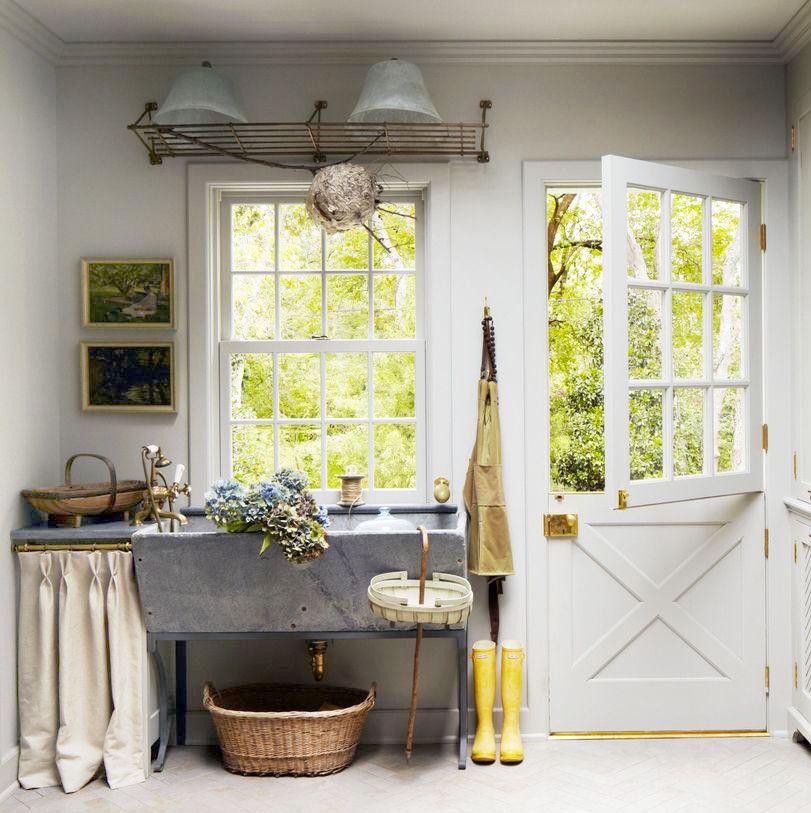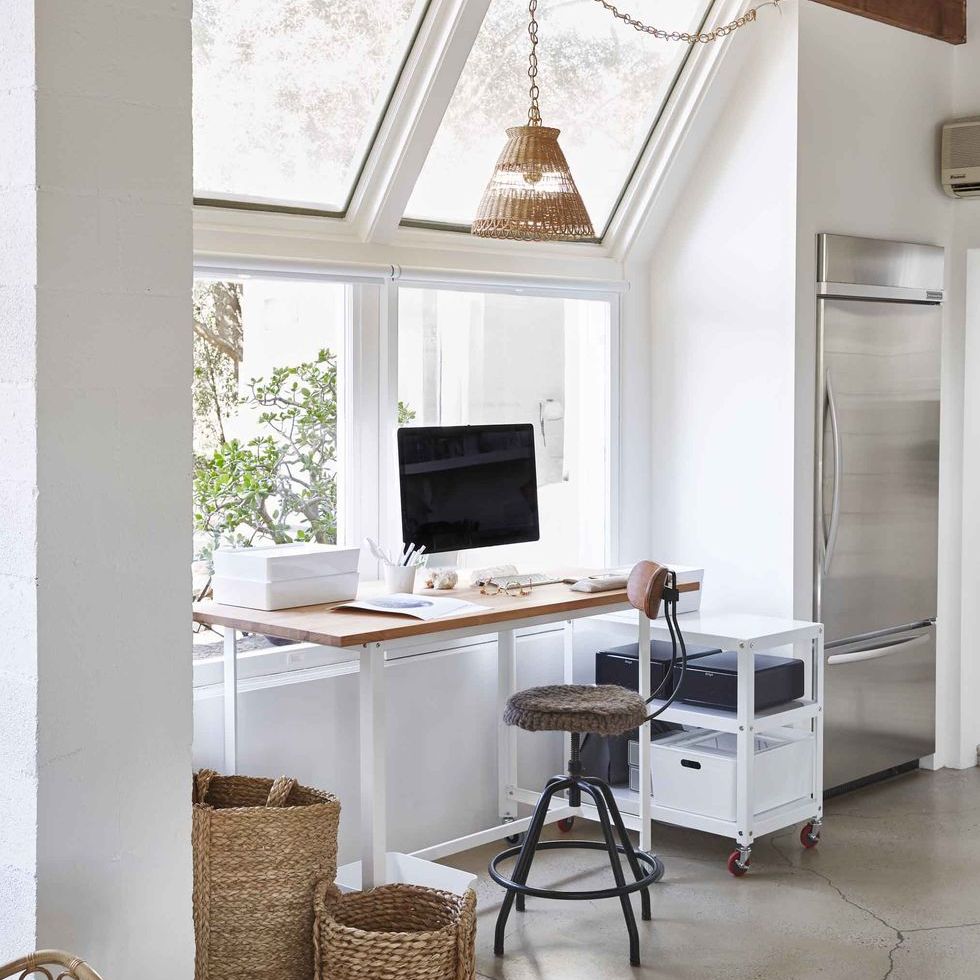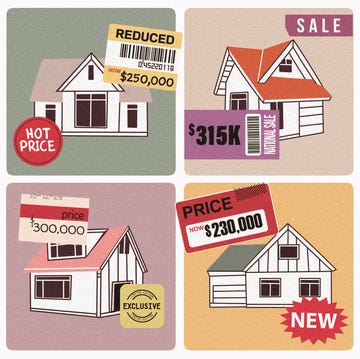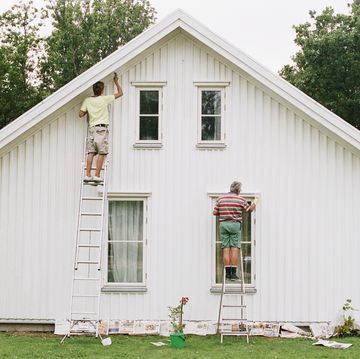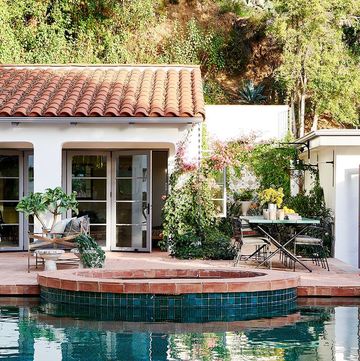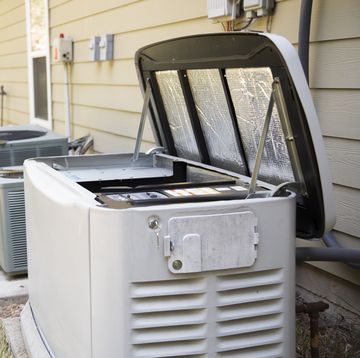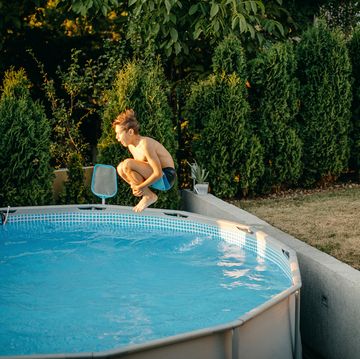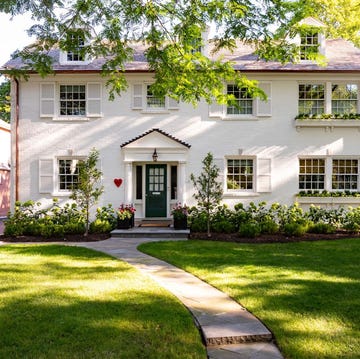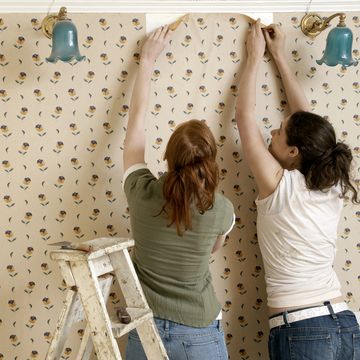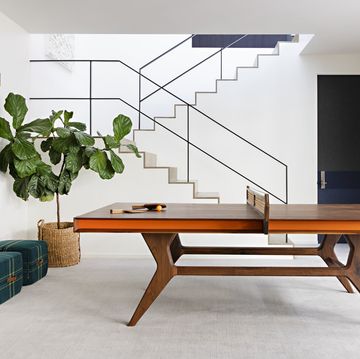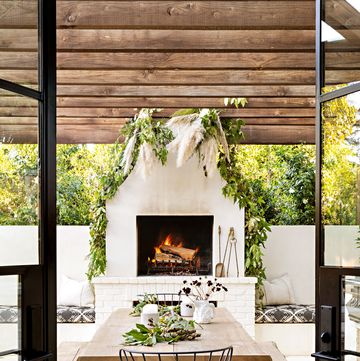You don't necessarily need to move to get the extra square footage you need or the dream kitchen you want. Building an addition onto your home is a great way to customize its size and layout without having to leave your beloved neighborhood or school district behind—and it's less expensive than building a new house from scratch. The total home addition cost can sound intimidating, but it's an investment in your home's value. It may also be cheaper than all of the expenses associated with selling your home and buying a new one. Whether you plan to add on a kitchen, primary suite, living room, or play space, it's worth it to consider a home addition whenever you start to feel cramped.
According to Home Advisor, the national average home addition cost is $46,000, with a low end of $5,000 and a high end of $150,000. This is a wide range that largely depends on the intended size and use of your home addition. If your addition requires a foundation, plumbing, or any other bells and whistles (like a wet bar), the cost can quickly skyrocket. Ahead, we break down the budget categories that factor into the cost of a home addition and what you can expect to spend on each.
Cost Considerations
These three factors determine how expensive your home addition will be and can help you determine the scope of your project and set a budget.
How Will You Use It?
The purpose your addition will serve largely determines how much it'll cost. Building on a blank room, whether it'll be an extra bedroom, family room, or mud room, costs much less than a more complicated space like a kitchen or bathroom with all of its special electrical and plumbing requirements. (Basically, any project that calls for an electrical or plumbing permit is going to cost you a lot more.) The size of your addition will factor into the cost too. An 8-by-8-foot box will cost much less than an additional 1,500 square feet. Adding on a bathroom will run you between $35,000 and $90,000, while an in-law or primary suite costs between $50,000 and $100,000, according to Home Advisor.
Do You Want to Build Up or Out?
Building on a second- or third-story addition, aka building up, can be more cost-effective than building out or adding a ground-floor room because it doesn't require a foundation. Pouring a concrete foundation (aka slab) costs from $5,000 to $40,000, depending on the square footage. It breaks down to between $5 and $12 per square foot. Building up is especially handy on small lots where there isn't room to expand your home's physical footprint, like in metropolitan areas or congested suburbs. You can also consider adding an additional story onto your home's garage to create an office or guest suite.
Do You Need an Architect?
Whether you work with an architecture firm or purchase stock plans off the internet will also greatly affect costs. Hiring an architect will be more expensive (usually 5 to 20 percent of the total budget), but you'll have much more control and customization in the plan. Stock plans can be much cheaper, but one-size-fits-all plans never work exactly the way you want them to.
Budget Breakdown
Many home addition costs are similar to those you'd encounter building a new home. Depending on the scope of your project, you may not need to factor in plumbing or major electrical work. Unfortunately, some costs apply to projects of any size and scale.
Permits
As with many other home renovation projects, you'll need to apply for a permit from your municipality's building department to get their approval of your plans and final construction. On average, a permit application costs around $0.15 per square foot. As we mentioned above, you may need electrical and plumbing permits too.
Labor
The most expensive portion of any construction budget, labor accounts for nearly 40 percent of the total budget for any sized addition. The labor includes contractors, subcontractors, plumbers, and electricians. The latter two we break down further below.
Systems
Expect to pay between $40 and $100 per hour for a licensed electrician to wire the new space. If your addition is a bathroom, kitchen, or laundry room, it's going to need plumbing; a plumber costs between $50 and $500 per hour. While this is a wide range, this largely depends on where you live and local demand. You may also want to have your heating and air conditioning extended to keep the new room comfortable.
Materials
The expense of lumber for framing depends on how large your addition is. The average framing cost is between $7 to $16 per square foot. That goes up if you're adding on multiple stories or rooms.
Trusses
Trusses are the wood beams that support your roof, so they're a foundational expense. Including labor, they cost an average of $1.50 to $4.50 per square foot, plus $20 to $75 per hour for labor, according to This Old House.
Insulation
How comfortable your home feels depends on how well it's insulated. (Insulation impacts how much it costs to heat and cool it too.) There are many types to choose from, depending on the materials you want to use, according to Insulation Guides. DIY-ers should want to opt for batting; spray foam is great to insulate small areas or fill holes. Blanket rolls of batting cost $0.10 to $1 per square foot. Spray foam insulation costs approximately $1.50 to $3.80 per square foot.
Drywall
An addition's worth of drywall costs an average of $1,000 to $10,000—a big range that depends on how much you need. The kind you need depends on your home addition's purpose. A bathroom or laundry room may require mold-resistant drywall. If you want lime-wash walls in your dream kitchen, you may need plasterboard. If you're concerned about environmental toxins, you may want to spring for VOC-absorbing drywall.
Exterior
There's some flexibility here since you can finish your addition's exterior to match or contrast with your home. The national average is $6,000 to $100,000 (a very wide range), but it depends on the material you choose. According to Today's Homeowner, stone veneer costs the most at $20 to $50 per square foot; vinyl siding costs the least at $1 to $8 per square foot. Stucco and brick veneer cost $3 to $6 and $5 to $20 per square foot, respectively.
Windows and Doors
You may not need doors, but any addition will need windows. You can expect to spend $5,000 to $10,000 on them, and more if you need storm windows and storm doors too. ($200 per storm window and between $100 and $450 per storm door, on average.)
Roofing and Gutters
Roofing and gutter installation cost approximately $6,000 depending on the size and slope of your addition's roof and the roofing material you choose. (Standard shingles cost less than cedar shake, terra cotta tile, or slate.) Metal gutters cost more upfront than vinyl or plastic ones, but they're more resilient too.
Is an Addition Worth It?
Ultimately, yes, the cost, stress, and hassle of building an addition onto your home is worth it, especially if what you really needed was more usable square footage. According to Credit Karma, a midrange primary suite addition has an average return of about 55 percent, assuming you’re adding a standard 24-by-16-foot bedroom suite with a separate bathtub and shower. A 6-by-8-foot bathroom addition has an expected return of about 53 percent.
Kate McGregor is House Beautiful’s SEO Editor. She has covered everything from curated decor round-ups and shopping guides, to glimpses into the home lives of inspiring creatives, for publications such as ELLE Decor, Domino, and Architectural Digest’s Clever.
